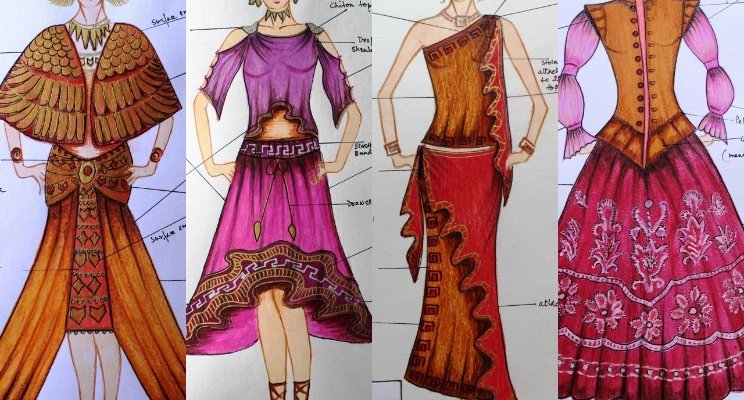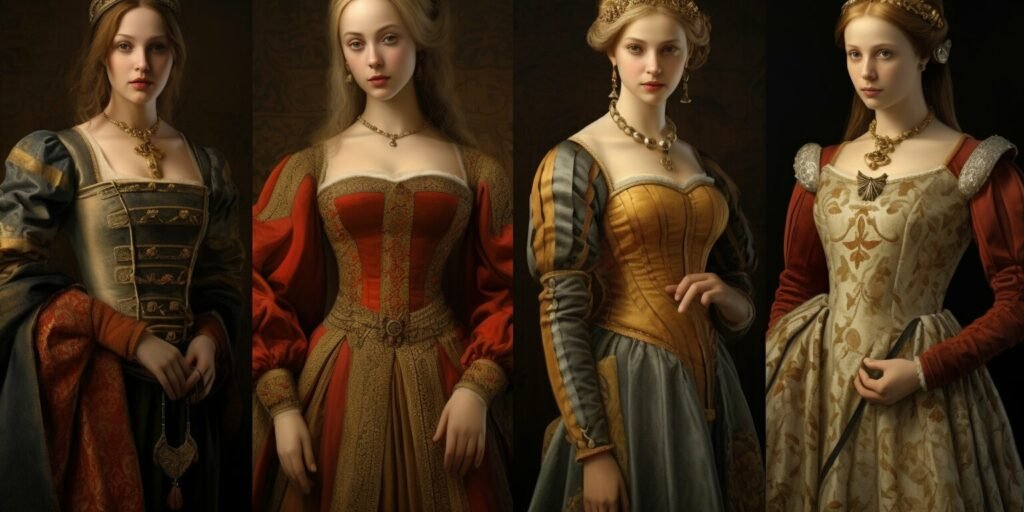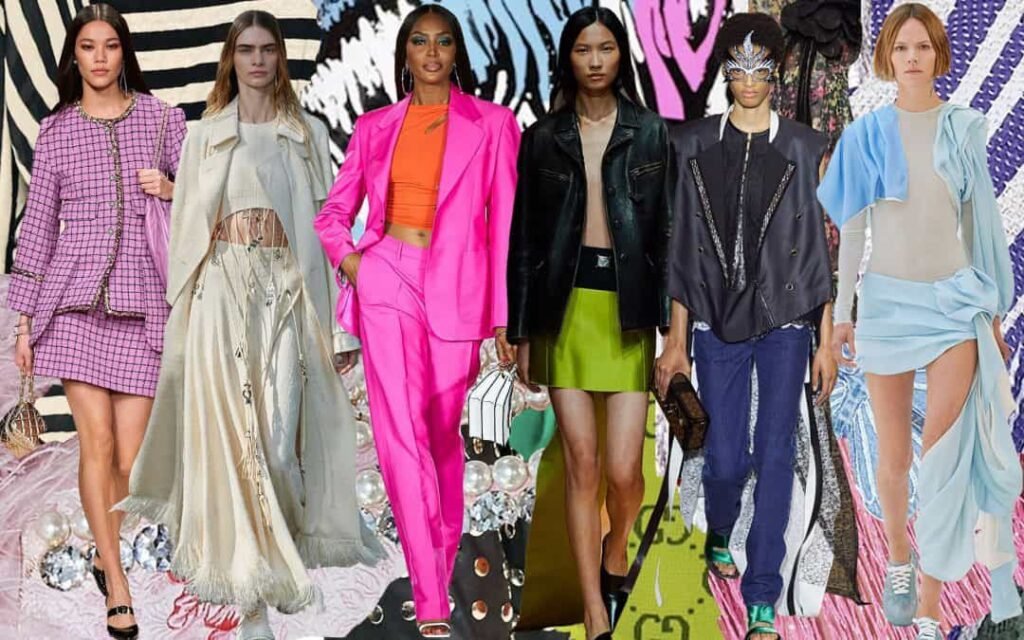
The Evolution of Fashion: A Journey Through Time
Ancient Fashion Trends: From Togas to Tunics
Fashion in ancient civilizations, such as those of the Egyptians, Greeks, and Romans, was not merely about personal adornment; it was deeply intertwined with social hierarchy and cultural identity. The choice of materials, the style of garments, and the manner of wearing them were all significant indicators of one’s status and role within society.

The Egyptians, known for their sophisticated textiles, predominantly utilized linen, a fabric derived from the flax plant. Linen was favored for its lightness and breathability, suitable for the hot, arid climate of Egypt. The basic garment for both men and women was the linen shift or kalasiris, a simple, often pleated dress. High-ranking individuals would accessorize with ornate jewelry and intricate wigs, emphasizing their elevated position.
In ancient Greece, clothing styles were designed to accentuate the human form and facilitate movement. The chiton, a type of tunic made from wool or linen, was a staple garment. It was usually fastened at the shoulders and belted at the waist. Complementing the chiton was the himation, a large rectangular cloak draped elegantly over the body. Greek fashion placed a strong emphasis on drapery and fluidity, reflecting the culture’s admiration for the human body and its natural shape.
The Romans, drawing inspiration from their Greek predecessors, developed their own distinctive fashion. The toga, a symbol of Roman citizenship, was a large, semicircular cloth worn over a tunic. Togas were typically made from wool and could be quite cumbersome, reserved for formal occasions and those of high societal rank. Everyday attire consisted of the simpler tunic, a practical garment for daily activities. Roman fashion also emphasized social distinctions, with the color and decoration of clothing indicating the wearer’s status.
Overall, ancient fashion was a reflection of the cultural values and social structures of the time. Clothing was not merely functional; it was a visual representation of identity, status, and cultural affiliation. The evolution of these styles offers a fascinating glimpse into the lives and values of ancient civilizations.
The Middle Ages to the Renaissance: Opulence and Rebirth
The journey from the Middle Ages to the Renaissance marks a significant transformation in the realm of fashion, reflecting the broader socio-economic and cultural shifts of these periods. During the Middle Ages, the feudal system heavily influenced clothing styles. Nobility and the upper echelons of society distinguished themselves through their attire, often adorned in luxurious fabrics such as silk, velvet, and brocade. These materials were not only symbols of wealth and status but also of the wearer’s allegiance to their feudal lords.
As the Renaissance dawned, a period characterized by a resurgence of interest in art, culture, and humanism, fashion underwent a dramatic evolution. The Renaissance era saw the introduction of elaborate garments that were richly decorated with intricate embroidery and embellishments. This period also marked the emergence of Italian and French fashion houses, which began to set trends that would spread across Europe. The influence of these fashion houses can be seen in the elaborate designs and luxurious materials that became popular during this time.
One of the most notable changes in Renaissance fashion was the increased importance of tailoring and fit. Garments were designed to highlight the human form, emphasizing beauty and individuality. This was a stark contrast to the more utilitarian and often loose-fitting clothing of the Middle Ages. The Renaissance also saw the introduction of new clothing items, such as the doublet and the farthingale, which added structure and volume to the silhouette.

Sumptuary laws played a crucial role in regulating fashion during these periods. These laws were enacted by authorities to control excessive spending on clothing and to maintain social hierarchies. By dictating who could wear certain fabrics and colors, sumptuary laws reinforced the distinction between different social classes. Despite these regulations, the desire for opulence and the influence of emerging fashion trends often led to creative interpretations and subtle defiance of these laws.
Overall, the transition from the Middle Ages to the Renaissance was marked by a notable shift towards more elaborate and finely crafted clothing, reflecting the broader cultural rebirth of the era.
The Industrial Revolution: Fashion for the Masses
The Industrial Revolution marked a pivotal era in the evolution of fashion, fundamentally transforming the way clothing was produced and consumed. Central to this transformation was the invention of the sewing machine in the mid-19th century, which revolutionized garment manufacturing. The sewing machine significantly reduced the time and labor required to produce clothing, making it possible to create garments at a faster pace and lower cost. This innovation laid the groundwork for the rise of ready-to-wear clothing, which democratized fashion by making stylish attire accessible to a broader segment of the population.
Mass production brought about by the Industrial Revolution had a profound impact on clothing styles. As garments could now be produced in large quantities, uniformity in fashion became more prevalent. Standardized sizes and patterns began to emerge, allowing for consistent quality and fit. The introduction of synthetic dyes and fabrics further expanded the possibilities for fashion. These technological advancements enabled a wider array of colors and textures, which were previously unattainable with natural dyes and materials. The availability of vibrant and affordable fabrics invigorated clothing design, paving the way for more diverse and expressive fashion trends.
The emergence of department stores during this period also played a crucial role in shaping the fashion landscape. These retail establishments provided a new platform for the distribution of ready-to-wear clothing, making fashionable garments more accessible to the masses. Department stores offered a variety of styles and sizes under one roof, catering to the needs and tastes of a growing consumer base. Additionally, the rise of fashion magazines and advertising became instrumental in influencing public tastes and trends. These publications and promotional efforts disseminated the latest fashion ideas, creating a more interconnected and informed society when it came to style and attire.
In summary, the Industrial Revolution was a transformative period for fashion, characterized by the advent of mass production, the rise of ready-to-wear clothing, and the impact of technological innovations. These changes not only made fashion more accessible to the general public but also laid the foundation for the modern fashion industry as we know it today.
Modern and Contemporary Fashion: From Haute Couture to Fast Fashion
The early 20th century marked a significant evolution in the world of fashion, heralding the birth of haute couture in Paris. Designers such as Coco Chanel and Christian Dior revolutionized the industry with their innovative approaches. Chanel’s introduction of the “little black dress” and her emphasis on simplicity and elegance transformed women’s fashion, while Dior’s “New Look” in 1947 brought a sense of opulence and femininity post-World War II. These iconic designers set the foundation for modern fashion, emphasizing tailored silhouettes and luxurious fabrics.

The rise of American fashion further diversified the industry. Designers like Ralph Lauren and Calvin Klein introduced a more casual and accessible style, reflecting the democratic and diverse nature of American society. This period also saw the influence of cultural and social movements on fashion. The 1920s flapper style, with its loose-fitting dresses and bold accessories, symbolized women’s liberation. The 1960s counterculture brought a wave of rebellious fashion, including psychedelic prints and bohemian styles, reflecting the era’s spirit of change and freedom.
The 1980s introduced power dressing, characterized by structured suits and bold shoulder pads, mirroring the increasing presence of women in the corporate world. This decade also saw the emergence of designers like Gianni Versace and Jean-Paul Gaultier, who pushed the boundaries of fashion with their provocative and avant-garde designs.
The late 20th and early 21st centuries witnessed the rise of fast fashion brands such as Zara, H&M, and Forever 21. These brands capitalized on rapidly changing trends and the demand for affordable clothing, fundamentally altering consumer behavior. However, this shift has raised concerns about sustainability and ethics within the fashion industry. The environmental impact of fast fashion and the often poor working conditions in garment factories have spurred a growing awareness and demand for sustainable and ethical fashion practices.
As the fashion industry continues to evolve, it is increasingly influenced by technological advancements and shifting consumer values. The integration of digital tools in fashion design and marketing, along with a heightened focus on sustainability, suggests a dynamic and continually evolving future for fashion.


Average Rating